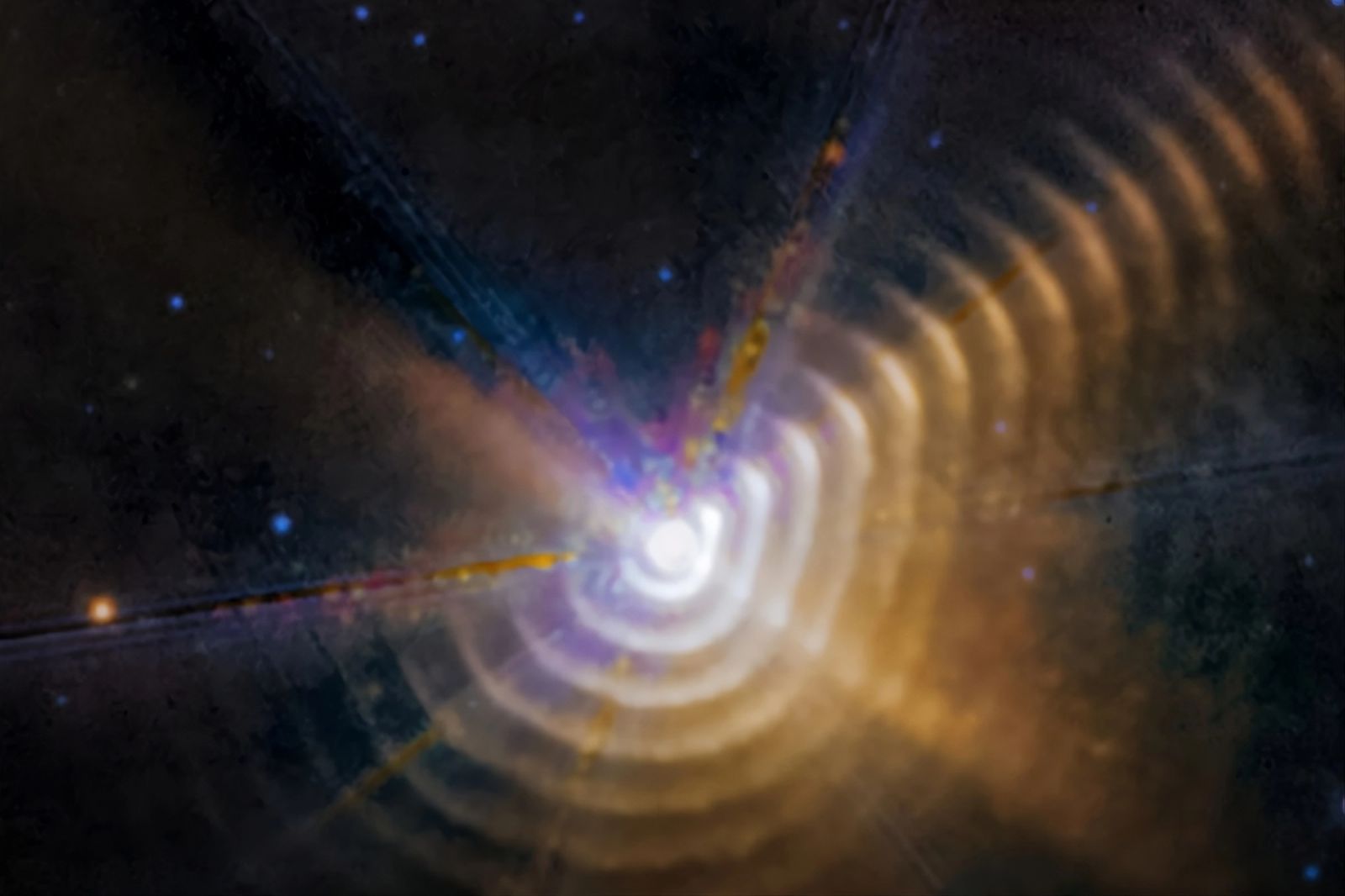James Webb telescope reveals impressive "rings of life" in our galaxy ✨
Follow us on Google News (click on ☆)

The Webb telescope provides a detailed view of carbon dust production in the Wolf-Rayet 140 binary star system.
Credits: NASA, ESA, CSA, STScI, Emma Lieb (University of Denver), Ryan Lau (NSF's NOIRLab), Jennifer Hoffman (University of Denver)
Carbon-rich dust is emitted in the Wolf-Rayet 140 binary system, located 5,000 light-years from Earth. This discovery sheds light on the mechanisms of formation and dispersion of elements essential for life in the Universe.
Thanks to its infrared imaging capabilities, the telescope has captured 17 distinct dust shells around the two massive stars in this system. These structures form when the stellar winds of the two stars collide during their close passages, an event that occurs every eight years.
The observations reveal that these dust shells are moving at an impressive speed, reaching nearly 1% of the speed of light. This rapid expansion is a phenomenon rarely observed with such precision, offering valuable clues about the dynamics of binary star systems.
Researchers have also noted that dust formation is not uniform, with accumulations forming delicate clouds as vast as our solar system. These structures, although fragile, play a crucial role in the life cycle of stars and planets.

Dust moves through space.
Comparison of two images taken in the mid-infrared by the James Webb Space Telescope of Wolf-Rayet 140, a system of dust shells ejected by two massive stars in an elongated orbit.
Credits: NASA, ESA, CSA, STScI, Emma Lieb (University of Denver), Ryan Lau (NSF's NOIRLab), Jennifer Hoffman (University of Denver)
The study of this binary system helps to better understand how elements like carbon, essential for the formation of rocky planets and life as we know it, are dispersed in space. The data collected by the James Webb Telescope opens new perspectives on the origin and evolution of stellar systems.
Scientists hope that these observations will help answer fundamental questions about the formation of stars and planets, as well as the distribution of chemical elements in our galaxy. The James Webb Telescope continues to push the boundaries of our knowledge of the Universe.
How are dust shells formed around binary stars?
The dust shells observed around binary stars like Wolf-Rayet 140 form during the collision of stellar winds. These winds, composed of charged particles ejected by the stars, collide at extremely high speeds, compressing matter and triggering dust formation.
This carbon-rich dust is then expelled into space, forming shells that move away from the stars at impressive speeds. The process is cyclical, repeating with each close passage of the stars in their elliptical orbit.
Observations from the James Webb Telescope have captured these phenomena with unprecedented precision, revealing details about the structure and dynamics of these dust shells. These data are crucial for understanding how elements essential for life are dispersed in the Universe.
What is the role of carbon in the Universe?
Carbon is a fundamental element for the chemistry of life and the formation of rocky planets. In the Universe, it is produced in massive stars and dispersed into space by processes like those observed in the Wolf-Rayet 140 system.
Carbon-rich dust shells can travel great distances, contributing to the formation of new stars and planets. This cycle of dispersion and reuse of elements is essential for the evolution of galaxies.
Observations from the James Webb Telescope on Wolf-Rayet 140 provide valuable information about this process, showing how carbon and other elements are integrated into the interstellar medium. These discoveries enrich our understanding of the origin of elements and their role in the formation of planetary systems.